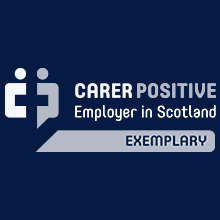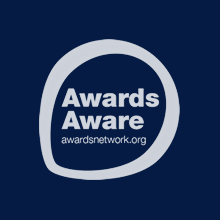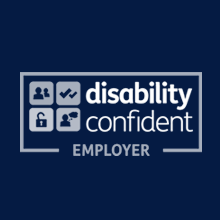EMERGENCY ASSESSMENT REQUIRING A&E
Those at very high risk – who are at risk of metabolic derangement or cardiovascular collapse, where weight loss is rapid and severe – may need immediate intervention to avoid potential loss of life. Please see referral details below for further information.
Please see our RefBite on the CAMHS eating disorder service, outlining how to sensitively explore concerns with patients and their families, what assessments to make, red flags to look out for and how to refer. The RefBite contains detail about discharge arrangements and after care too.
Eating disorders affect both boys and girls, can be very secretive and not everyone with an eating disorder is underweight.
Lothian CAMHS will see children and young people up to the age of 18 years. If you are not sure about the referral or want other advice, please access the CAMHS Consultation Service.
Anorexia Nervosa: is characterised by a restriction of nutritional intake and/or other weight influencing behaviours e.g. excessive exercise/activity, laxative use, which results in weight loss and low body weight. Rapid weight loss at any weight should be responded to with the same urgency; In children and adolescents this might present as failure to gain weight as expected, based on the individual developmental trajectory rather than weight loss; an intense fear of gaining weight and disturbances in the way that a young person see’s their weight and shape. The onset of Anorexia Nervosa is often during adolescence or early adulthood (between the ages of 10 and 24). Children with Anorexia Nervosa may not be able to express body image concerns. Instead, this might be expressed by stating another reason for not eating or experiencing tummy pain or in their behaviour, e.g food refusal.
Bulimia Nervosa: Bulimia Nervosa: is characterised by recurrent episodes of eating large volumes of food in one sitting (bingeing) and associated compensatory behaviour to prevent weight gain such as vomiting, misusing laxatives, fasting, diuretics or other medication and excessive exercise. Binge eating episodes occur once a week or more over a period of at least 1 month and is characterised as a discrete period of time (e.g. 2 hours) during which the individual experiences a loss of control over their eating behaviour. There will also be excessive preoccupation with body weight or shape, this includes behaviours such as repeated body checking. Children do not typically engage in binge-eating due to a lack of access and control of food and more typically begins during or shortly after puberty.
Other Specified Feeding or Eating Disorders (OSFED) present in those young people who may have symptoms of the categories above, presenting with abnormal eating or feeding behaviours but who do not meet all the required diagnostic criteria. They can be just as severe and complex in presentation.
Binge Eating Disorder (BED): is characterised by binge eating episodes, but these eating episodes are not regularly accompanied by inappropriate compensatory behaviours aimed at avoiding weight gain. BED is associated with weight gain, increased body fat and concealing one’s eating. There is marked distress around the pattern of binge eating or impairment of functioning. The onset of Binge Eating Disorder occurs during adolescence or young adulthood but can also begin in later adulthood.
Avoidant Restrictive Food Intake Disorder (ARFID): is characterised by an eating or feeding disturbance (extreme lack of interest in eating/food, severe avoidance based on sensory characteristics, distress about aversive consequences of eating) leading to significant and severe weight loss /absence of expected weight gain, nutritional deficiency, with no evidence of disturbance in experience of body shape or weight.
C.M & L.S 11-04-24
Most eating disorders are extremely secretive and a ‘watch and wait’ approach in this population is not recommended due to the serious physical complications that can occur. Providing clear information about physical parameters within the referral, and updates if the patient reports deterioration, allows the triage team to risk assess appropriately.
Please indicate the frequency of binge/purge behaviours and any compensatory behaviours. Please also describe the rate of weight loss, as this is key to assessing urgency:
- ≥1kgs a week for 2 consecutive weeks and / or
- more than 20% loss of body weight in 6 months and / or
- BMI for age under 5th percentile.
Where there is concern in relation to an eating disorder, please complete a medical examination that includes weight (shoes removed and in light clothing with pockets emptied), height, rate of weight loss, lying to standing BP and heart rate. Please note the WHO growth charts, which include a BMI centile chart at the top of the chart: https://www.rcpch.ac.uk/resources/uk-who-growth-charts-2-18-years
Please also arrange blood tests for C&Es, LFTs, TFTs, B12, folate, calcium, phosphate, magnesium, full blood count and random glucose.
Who to refer:
EMERGENCY REFERRAL requiring immediate A&E:
If there are clear medical indicators that highlight significant risk factors, please send the child/young person to appropriate A&E. Please ensure that a CAMHS referral is still completed, indicating that they have been sent to A&E.
- The concerning risk factors are based on the based on the MEEDs guidelines, Risk Assessment: evaluating the impending risk to life due to the patients’ illness.
Examples of those needing immediate A&E referral include:
- HR <40,
- standing systolic BP below 0.4th centile for age, associated with recurrent syncope and postural drop in systolic BP of >20mmHg or increase in HR of over 30bpm (35bpm in <16),
- Rapid weight loss (≥1kg/week for 2 consecutive weeks) at any weight,
- fluid refusal,
- acute food refusal or estimated calorie intake <500kcal/day for 2+ days.
Please refer everyone else urgently.
Of particular concern are those who:
- are significantly underweight for their age or failure to gain weight and with no physical cause;
- are experiencing rapid weight loss;
- have consistent binge and/or purge behaviours;
- and/or are experiencing medical complications as a result of their eating disorder;
- have amenorrhea.
FOR PROFESSIONALS ONLY
For Out of Hours advice, overnight or at weekends please contact CAMHS on call Dr rota system, (0131 536 1000)
For CAMHS Unscheduled Care CAMHS Unscheduled Care Service – RefHelp
CAMHS Unscheduled Care Service (UCS) is an emergency mental health assessment service. It is based at the Melville Unit, RHCYP, but covers all of Lothian. It is a nurse led service. The service will see children and young people who are experiencing a mental health crisis and require an emergency mental health assessment. The focus from CAMHS USC will specifically be around risk assessment and safety planning.
Who not to refer:
- Those aged over 18 years – please refer to adult services.
How to refer:
Please refer to the locality CAMHS team via SCI Gateway (and please send a SCI referral to CAMHS even if the patient has been sent to A&E)
- For CAMHS Unscheduled Care CAMHS Unscheduled Care Service – RefHelp
- https://www.rcpch.ac.uk/resources/uk-who-growth-charts-2-18-years
- Eating disorders (sign.ac.uk)
- Worsening symptom advice for eating disorders PIL
- Medical Emergencies in Eating Disorders: Guidance on Recognition and Management
- MEEDs Risk Assessment Tool
- ICD-11 Feeding or Eating Disorders
Resources for Parents/Carers/children and young people
An online platform for parents and carers of a young person with recent onset eating disorder: Cared Scotland
Online Resources – Child and Adolescent Mental Health Services (nhslothian.scot)













